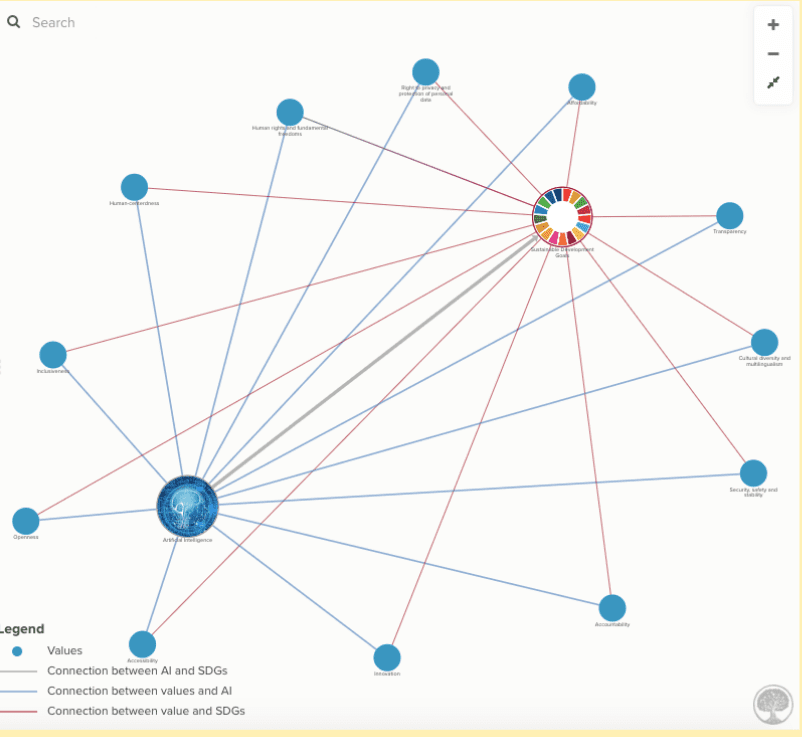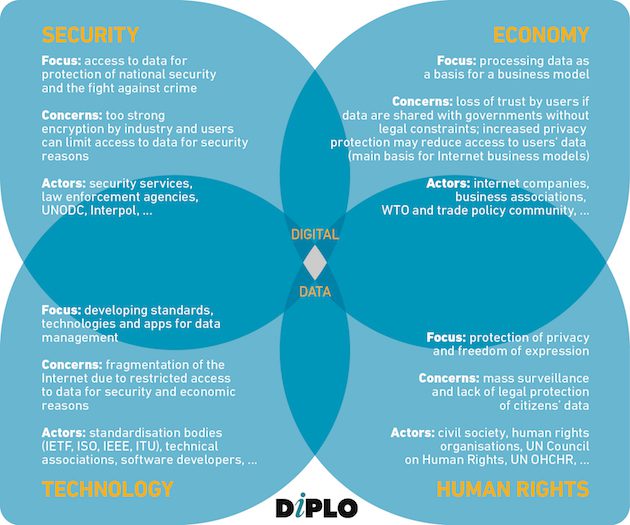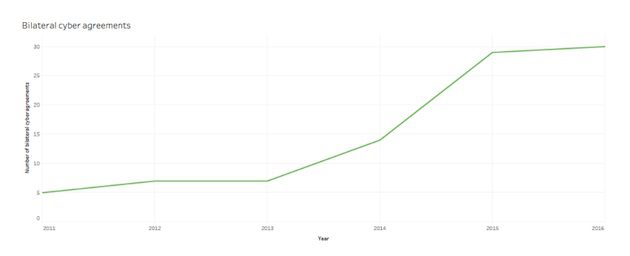The reality of science fiction: Behind the scenes of race and technology
‘Black people live the estrangement that science fiction writers imagine.’
― Greg Tate (US writer, musician, and founding member of the Black Rock Coalition)
Just as the world began to step out of its paralysis and panic about the peak of the COVID-19 curve, another apocalyptic image shook our supposedly shared sense of humanity, which is too often taken for granted. The initial shock from the media footage of police brutality on the streets of the USA and the echo of another ‘I can’t breathe‘ plead just before an arrested black person dies are avalanching waves of anger, grief, protests demanding the defunding of the police and community initiatives around the world. Resembling one of the first examples of viral media – the VHS tape of the violent beating of Rodney King – these juxtaposed snapshots brings us to the chilling realisation that the reality black and brown people face outside and inside of their homes in 2020 is disturbingly similar to that of 1991, as well as the horrific history preceding it. While cracking the thin surface of democratic staging to reactions of disbelief and anger, the ones we are witnessing today only bring to light the enormous shadow side of society called systemic oppression.

Source: Sara Dević, 2020. ‘Black Lives Matter’ protest in Washington in June 2020.
An inequality that is incomprehensible, irrational, denied, and normalised, can only be recognised when recorded, shown in detail, and distributed widely. Technology has been shown to be instrumental and controversial for both understanding and facilitating this continually damaging segregation, acting as an amplifier in both directions. While communication technologies offer viral polarisation of political opinions, and spread fear, panic, and anger, they also create a space for awakening to social inequalities, and to hearing and understanding the importance of Black Lives Matter. Through the momentum of public attention caused by the shock therapy from real-life events, means of communication broaden the space for narrative and voicing. These moments are key to enabling the social sensory apparatus to hear stories that have not been registered as part of that society, and directly affect its functioning, enabling changes such as inclusive terminology in software to replace racially fueled terms such as “master”,”slave”, “blacklist” and “whitelist”. Narrative plays a much more valuable role than it is given credit for.
One such form of sociotechnical mesh is the subgenre of science fiction called Afrofuturism that brings to light the complex history of race and technology, a history that facilitates terror and offers a means of empowerment. Traditionally a genre about the ‘human’ as a universal being and ‘technology’ as the supernatural and artificial, science fiction has powerful contributions from positions that have historically been seen as on the periphery of the human. Only recently have these diverse narratives emerged within the fictional global literary and art landscape (Latinofuturism, Romafuturism), showing that fiction plays a strong cultural role in many community bonds. The genre shows the importance of storytelling as a way of survival. It imagines the future and reinvents the past from the perspective of those in a disadvantaged social position.
In this text we will delve into Afrofuturism in order to unravel its historical importance and the role it has in discourses on power and technology. These perspectives have also brought to light the dominant narratives within popular science fiction and culture that have revolved around a narrow definition of a lived human experience, which is predicated on a traditional western heteronormative perspective.
![Janelle Monáe - Dirty Computer [Emotion Picture]](/wp-content/uploads/2020/06/Screenshot-from-2019-01-13-21-19-26_0.png)
Source: Scene from the film Dirty Computer (Janelle Monáe, 2018).

Afrofuturism is a genre of black speculative fiction and culture, spanning science fiction writing, film, music such as jazz and hip hop, and visual art. Featuring names such as painter Jean-Michel Basquiat, writer Octavia Butler, and singer-songwriter George Clinton, it came to the forefront of Western cultural discussions with the appearance of Marvel’s 2018 film Black Panther. This recognition quickly opened the door to appropriation, as we saw in a controversial exhibition inspired by Afrofuturism in Berlin in 2019, showing 21 white, mostly male artists and 1 person of colour.
There is no need to go further than the telecommunications infrastructure to recall that old empires created networks, both on land and underwater, networks that still live in today’s digital infrastructures. The fastest data route from West Africa to the rest of the world is based on the old colonial underwater cable infrastructure that goes through London. Nevertheless, Africa remains the least connected continent in the world. Reflecting on the question of colonialism, one could also say that, historically, black people were subjugated by and transformed into technology, made tools of, dehumanised, devalued, and set to an industrial purpose. Therefore, the focus on technology as a key topic in Afrofuturism is that of facilitating empowerment, since the one who has access and means to technology is the one who has power. Logically, the genre transforms the role of black people in society, from being objects to becoming empowered subjects, giving them back their dignity, humanity, and recreating an erased history.
What this rich movement and genre teaches us is to rethink the social context of today, and the norms of accepted inequality which are founded on layers of convoluted history and politics.
‘Class, race, gender, sexism, nationalism, militarism […] the toxic energies of our time want to come through us. They want to come out. Hey need to be rewritten and we have to be conscious about how that happens, so that we’re not writing the same narrative’
Besides understanding that historical infrastructures are intertwined with a colonial legacy, in contemporary technoculture it is important to acknowledge the extent to which the polarisation of opinions can be automated, quickly amplifying existing prejudices. Algorithmic radicalisation is the ease with which an opinion can find support online, and quickly get polarised through further connections. A perfect example of this is the case of Tay (Thinking About You), an artificial intelligence (AI) chatbot introduced to the world by Microsoft on Twitter. It quickly became exponentially xenophobic and racist, and had to be shut down only 16 hours after its launch on 23 March 2016.

Source: Twitter, 2020. Header photo of chatbot TayTweets’ Twitter account (@TayandYou).
How did a teen girl chatbot go from ‘Hello world!’ to wishing feminists would burn in hell and black people would be sent to concentration camps in less than a day?
Speaking of software, bias can, and is, more often inscribed in the datasets that machine-learning algorithms are based on. The current market of facial-recognition software has most commonly been found to less accurately identify women, especially those of colour. Predictive AI software, such as Amazon Rekognition, broadly used by the police in several US states, has shown consistent levels of discrimination based on race and gender, inaccurately predicting and accusing black men and women of committing crimes. The demands of many digital and civil rights organisations, activists and researchers have finally gotten attention through the mass movement concerning civil liberties of black and brown communities, with many law enforcement agencies suspending their use of this software as we speak.
Digital policy and personal and social identities are entwined on every level, since policy governs the use and distribution of technology within a society. Race, gender and class, subjugated to the reinforcement of division in society, become an amplifying aspect of data colonialism, casting light on prescribed norms of algorithmic classification.
For this occasion, we’ll step into the genre of Afrofuturism to extract notions of colonisation and applications of the relationship between race and technology from this marginalised but vital field of storytelling. Drawing on three films in particular (Black Panther (2018), the film that mainstreamed Afrofuturism; Brother from Another Planet (1984); and Space is the Place (1974)) let’s consider a few scenes while still keeping in mind the footage of current police brutality towards black people.
Scene 1: Space is the Place
The first scene opens with young African Americans in a youth centre in Oakland in 1972. They’re singing, talking, playing table tennis, and relaxing. All of a sudden, we see a close-up of shiny futuristic shoes. Wearing them is a black man with a cape and a type of golden diadem on his head. He is accompanied by a pair of extravagantly costumed women, their faces obscured by massive gilded animal masks: one of a dog, one of an eagle. They appear vaguely Egyptian, but certainly not of this world.

Scene from the film Space is the Place (John Coney, 1974)
‘What it is, what it is?’
‘Why your shoes so big?’‘Are those moon shoes?’ one girl asks.
‘How do we know you for real?’
‘How do we know you ain’t some old hippie or something?’ asks another.
Then the black mystical persona, played by author Sun Ra (born Herman Poole Blount), answers:
How do you know I’m real? I’m not real. I’m just like you. You don’t exist in this society. If you did, your people wouldn’t be seeking equal rights. You’re not real. If you were, you’d have some status among the nations of the world. So we’re both myths. I do not come to you as a reality; I come to you as a myth, because that’s what black people are. Myths. I came from a dream that the black man dreamed a long time ago. I’m actually a presence sent to you by your ancestors.
The man speaking is Sun Ra, one of the most influential Afrofuturist authors, in a movie called Space is the place.
Sun Ra was a prolific author, poet, and musician, who taught a course called ‘The Black Man in the Cosmos’ at the University of California, Berkeley. In interviews he claimed that he came from Saturn and that he was just visiting. His mystical half-Egyptian name, eccentric behaviour, and otherworldly music front an Afrofuturist ethos of spiritual strength in interfacing with American society. By legitimising a mythical existence, he gave both an answer to the inexplicable black condition and a hope for an elevated parallel existence which could be reached through music.

Source: Screenshot of the film Space is the Place (John Coney, 1974)
Sun Ra spent his youth in highly segregated Chicago where blacks lived in poverty and were confined to a certain area. This created a storyline of crime and punishment – living in confinement and dying in prison (A Pure Solar World: Sun Ra and the Birth of Afrofuturism). It meant the sanctioning of life and defining identity as the opposite, the other, a negation – not having, not being allowed, not talking. The black person in this sense lives the paradox of hypervisibility and invisibility, many authors have brought to light. They are noticed by everyone, but acknowledged by few. Sun Ra’s way of escape was through imagination, through myth, through the creation of another world, away from planet Earth altogether. He advocated redeeming power through that which was exoticised as superstitious, considered irrational, and primitive.
The power of such a fantasy spread to create a community and an activist movement, a strong social force and a genre that we now call Afrofuturism. As inspirational as Sun Ra’s character and work were, we will detach from his orbit to make space for other places of the Afrofuturist imaginarium, with his ensemble The Arkestra playing in the background.
‘Every desire
is an end
and every end
is a desire
then
the end of the world
is a desire of the world
what type of end do you desire?’
― Sun Ra, This Planet is Doomed: The Science Fiction Poetry
Scene 2: Brother from Another Planet
An alien falls to Earth, into Harlem, in 1984. He takes the identity of a mute black person gifted with healing hands. Word travels, and soon the black community starts paying him to repair electronic appliances, during which time he demonstrates the power to heal open wounds.
‘You don’t talk, huh? Well that’s good. If you don’t talk, you don’t talk people into things. You don’t talk, you don’t lie. You don’t talk, you can’t complain,’ we hear from the woman at the house at which he stays for a short period.

Scene from the film Brother from Another Planet (John Sayles, 1984)
While the lack of language is present throughout the film, encrypted coded communication allows the alien to escape the oppressors from his home planet and survive. This metaphor refers to the history of erasing African languages and the creation of alternative modes of communication, as black people had to resort to coded language in order to survive, too.
‘We need images of tomorrow, and our people need them more than most.’
― Samuel R. Delany (American author, 1978)
The systematic erasure of memory was done both by separating families and denying them their language, as to speak it meant death. Black history is like science fiction: abducted and subjected to extreme experiments, handed a future defined either by confinement or death, in a land where everyone else speaks and looks like an alien.

Source: Screenshot of the film Dirty Computer (Janelle Monáe, 2018).
Erasure around this topic doesn’t end there. The British government’s Operation Legacy targeted the removal of archives documenting torture in around 37 African countries. The records were either destroyed or sent back to England during the process of decolonisation. Caroline Elkins’ Imperial Reckoning: The Untold Story of Britain’s Gulag in Kenya, a Pulitzer-prize-winning account of atrocities in Kenya, wasn’t initially accepted because of its reliance on oral history. It achieved acclaim only when the British government released its archive material. What happens in cases when there are no official documents, or where the government responsible refuses to confirm such accounts, even though they are true?
Alongside the importance of thinking through these striking issues of erasure and silencing, the film explores the importance of coded, encrypted language as a means of connecting and understanding. While encryption is the basis of safe communication, the integrity of communication is more certain when creatively coded.
Back in the land of their ancestors, different conditions for the black community can be imagined. On that note, we will approach the third narrative.
Scene 3: Black Panther
An example of the harmonious existence with nature is the land of Wakanda from the movie Black Panther. It is a beautiful hidden jewel, technologically superior to the rest of the world. Its superiority lies in the fact that their technology is used for healing and maintaining the well-being of society, as opposed to conquering and invading. The black panther is an animal that never attacks, only defends. As a film, the Black Panther can be seen as an argument for the decentralisation of the technical market and the development of a more caring society, one that nurtures rather than destroys the very nature we live in. In effect, in times of global warming, the clock is ticking for humanity to take responsibility for its impact, and change its patterns of behaviour in order to survive as a species.
‘We will work to be an example of how we, brothers and sisters of this earth should treat each other. Now, more than ever, the illusion of division threatens our very existence. We all know the truth. More connects us than separates us. But in times of crisis, the wise build bridges, while the foolish build barriers. We must find a way to look after one another, as if we were one, single tribe.’

Scene from the film Black Panther (Ryan Coogler, 2018)
Though true, to develop the sensory capacity to grasp the effect society has on the environment, the dominant social paradigms of hierarchy and power first have to heal their own receptors for internal mechanisms. Only by unlearning the norms under which identities are habituated is there space to grasp one person’s science fiction as another person’s reality. With the growth in populist politics and viral media, a critical and contextual approach to technologies that perpetuate oppression and affective behaviour has become more important than ever. While we’re living inside the high-speed train of tech-positivist arrogance, we often overlook how expression can be systemically silenced, and how specific parts of society are affected by this silencing. The role of technology is fundamental in shaping spaces of visibility, presence, and agency. Stepping out of fiction as a space for imagination that maintains the status quo while escaping to a better world, Afrofuturism (together with many other possible futurisms) offers keys for understanding where the social sensory apparatus is blinded and suffocated.

Source: Darija Medić, 2019. Exhibition Mundos Alternos: Art and Science Fiction in the Americas, Queens Museum, New York City.
More importantly, the value of storytelling serves as a reminder that narratives can be chosen, created, and then embodied as a life lived. Practising the change of narrative daily can lead to emergent strategies and change in the world. One in which communities would not need to fight for the right to breathe. This change begins by listening.
This blog post is part of a science fiction series that DiploFoundation is preparing, as a way of rethinking digital policy and society.
Additional material
As an inspiration for enhancing listening capacities, this reading comes with a sample playlist of Afrofuturist classics:
Jimi Hendrix – Electric Ladyland
George Clinton – Computer games
Herbie Hancock – Future shock
Bernie Worrel – Blackatronic Sciences
Parliament – Funkadelic Astrofunk
Sun Ra – Space is the place
Public Enemy – Fear of a Black Planet
Flying Lotus – Cosmogramma
Janelle Monáe – The Archandroid
Afrika Bambaataa & Soulsonic Force – Planet Rock















